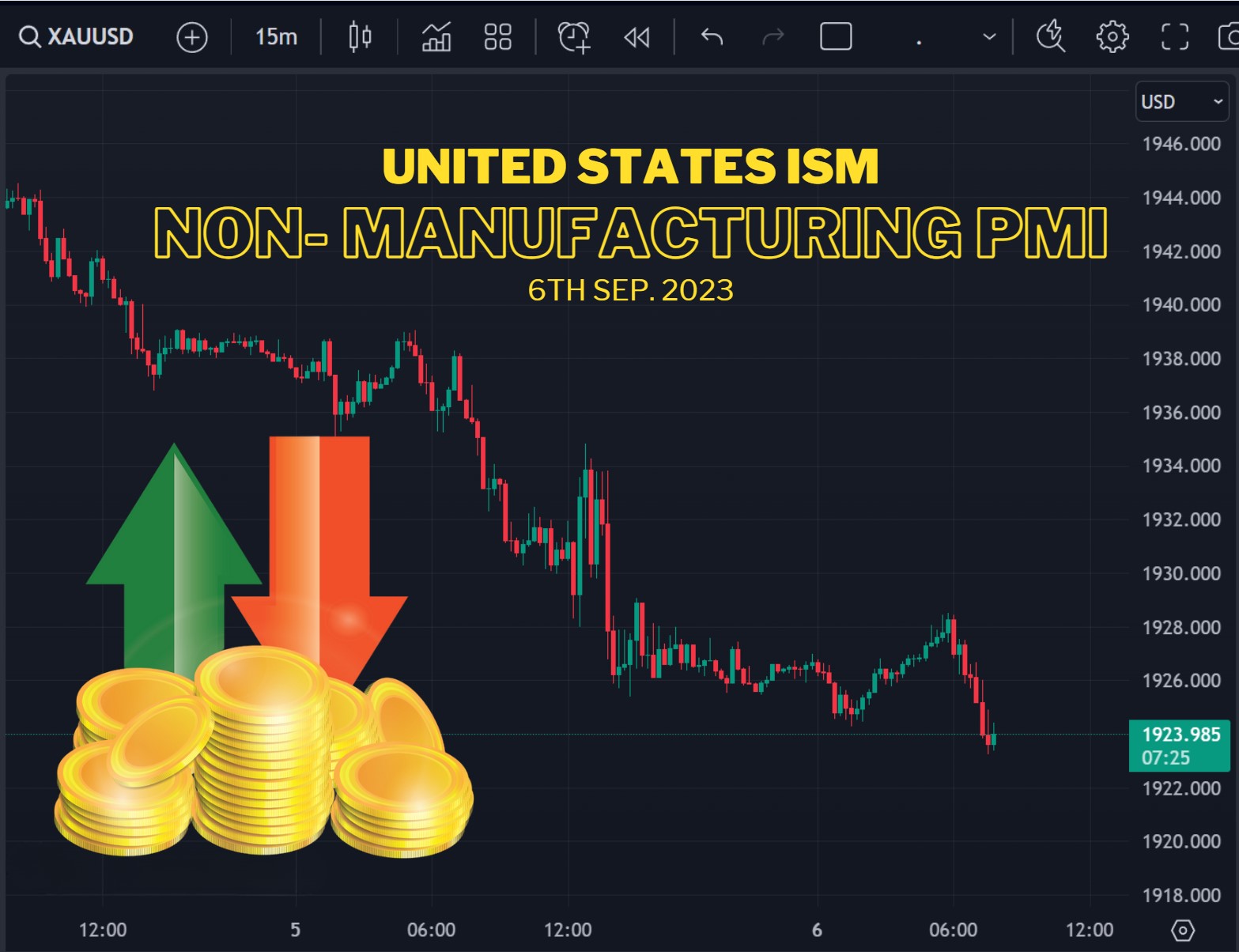
Introduction :
The Institute of Supply Management (ISM) Non-Manufacturing Purchasing Managers’ Index (PMI) (also known as the ISM Services PMI) report on Business, a composite index is calculated as an indicator of the overall economic condition for the non-manufacturing sector. The NMI is a composite index based on the diffusion indexes for four of the indicators with equal weights: Business Activity (seasonally adjusted), New Orders (seasonally adjusted), Employment (seasonally adjusted) and Supplier Deliveries. The non-manufacturing PMI takes into account the business conditions in the services sector, such as employment, production, new orders, prices, and inventories, to determine whether the industry expanded or contracted during the month.
ISM Non-Manufacturing PMI and Gold
Manufacturing remains an important part of the economy, decreasing share of total employment notwithstanding. Its total output is what counts, and it keeps pushing higher. But services take a bigger share of the economy.
Based on the data we have, we predict that the bad data will result in a rise in the price of gold as a result of the bad news. When investors are uncertain about the future, they often turn to gold as a safe investment. As a result, the demand for gold increases and drives the price up. As a tangible asset, gold is not easily affected by changes in the forex market, and it is considered a hedge against inflation. Additionally, gold has historically been seen as a safe-haven asset, meaning investors often turn to it in times of economic or political uncertainty.
Whenever there is unexpected data, only gold falls, but there is a lesser chance because the market is oversold.
PMI Index
The PMI Index is an important indicator of economic health. It is compiled and released monthly by the Institute for Supply Management. The ISM sends surveys to senior executives at more than 400 companies, asking managers about monthly changes in business conditions in five major areas: new orders, inventory levels, production, supplier deliveries, and employment. Contrary to Markit Economics PMI’s, the ISM weighs each of these survey areas equally.
The PMI is calculated as: PMI = (P1 x 1) + (P2 x 0.5) + (P3 x 0)
Where:
P1 = percentage of answers reporting an improvement
P2 = percentage of answers reporting no change
P3 = percentage of answers reporting a deterioration
As one can see, the PMI is a number from 0 to 100. If all managers’ report improvement, the index is 100. If all respondents note a deterioration, the index equals 0. If all managers see no change, the index is 50. Hence, the index above 50 means an expansion, while below 50 implies a contraction.
Conclusion:
Overall, an ISM PMI number above 50 indicates that the economy is expanding and is healthy. However, a number below 50 indicates that the economy is weak and contracting. This number is so important that if the PMI is below 50 for two consecutive months, an economy is considered in recession. traders have good reason to pay special attention to the important releases from the ISM manufacturing index.
Where to contact us :
Website : www.forextrade1.co
Twitter : www.twitter.com/forextrade11
Telegram : telegram.me/ftrade1
Facebook : www.facebook.com/Forextrade01
Instagram : www.instagram.com/forextrade1
YouTube : www.youtube.com/ForexTrade1
Skype : forextrade01@outlook.com
Email ID : info.forextrade1@gmail.com
Discord : https://discord.gg/vEk98ZvrHP
LinkedIn : https://www.linkedin.com/company/forextrade11


